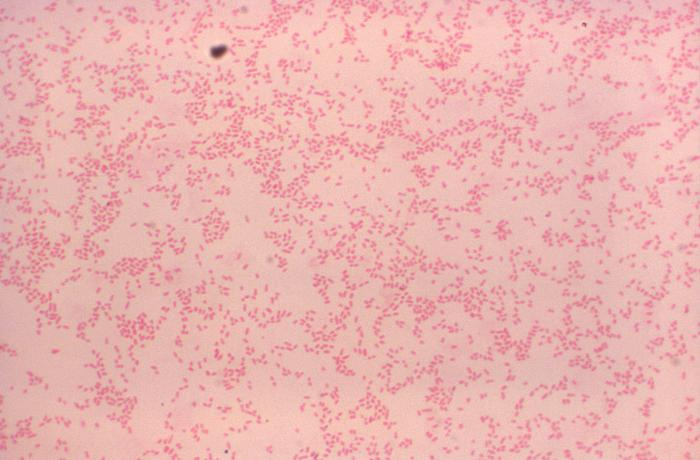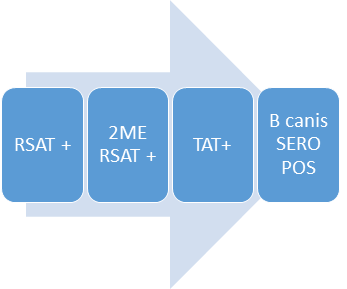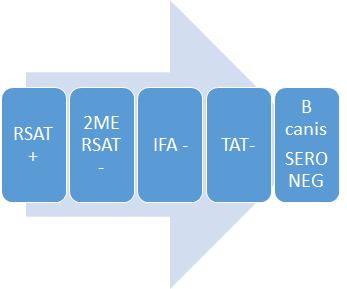
New Brucella Canis Tests Available At PADLS
Authored by: David L Thompson MS, PhD, and Deepanker Tewari BVSc PhD DACVM
Canine brucellosis is an important, incurable reproductive disease of dogs that is caused by Brucella canis. Natural transmission of canine brucellosis can occur by several routes. B. canis organisms are present in abundance in aborted material and vaginal discharge. Shedding of B. canis may occur for up to six weeks after an abortion. Semen, seminal fluid and urine from infected males have also been shown to be sources of infection. The organism can be present in blood, milk, saliva, nasal and ocular secretions, and in the feces. Carrier animals shed the organisms intermittently and present a risk to other dogs and even for humans. The carrier animals must be identified and removed from the breeding population to stop the spread of disease.
Diagnosis of canine brucellosis is best accomplished by use of diagnostic aids such as serology, PCR and culture. PADLS-Harrisburg now offers both serology and culture tests for B canis detection. The lab has recently expanded serology test offerings for detection of canine brucellosis. The Rapid Slide Agglutination Test (RSAT), both with and without 2-mercaptoethanol (2-ME), will continue to be used as an initial screening tool. While this test produces few false negative results, false positive results are common. Previously, a serum sample yielding an “RSAT pos./RSAT-2ME neg.” result would prompt a request for a client to resubmit another serum sample after 4 weeks to distinguish an acute from a chronic infection. In an infected animal, this follow up testing conducted after 4 weeks normally will show the RSAT-2ME test to be positive following conversion of IgM to IgG antibodies against Brucella. However, in a number of scenarios we examined, when a second sample was received, no change was seen in the original reactivity. This result prompted us to introduce additional tests during primary screening in our testing algorithm to address false positives. In addition to the RSAT -/+ screening test, clients can now request the B. canis indirect immunofluorescent antibody (IFA) test. The IFA test, is a supplementary screening tool and can help resolve false positives seen with the RSAT test–particularly when RSAT is positive and the RSAT-2ME is negative. Generally, an “RSAT pos./RSAT-2ME pos.” result indicates infection. These samples were previously forwarded to the National Veterinary Services Laboratory for performance of the Tube Agglutination Test (TAT+2-ME) confirmation. The TAT+2-ME test is a semi-quantitative test with increased specificity. The TAT+2-ME test has now been validated by PVL and is offered as a follow up test. This new test reduces both the turn-around time and the client shipping fee required for forwarding samples. The serological testing strategy used at the lab is summarized in the diagram (below).
B canis serology algorithm at PADLS


The isolation of B. canis from a clinical specimen remains the diagnostic gold standard, but because of intermittent shedding, up to 3 consecutive cultures may be necessary to rule out the disease in suspect animals. Recently, PVL added culture option too to enhance the B. canis diagnostic test options. Clinicians should consider B. canis anytime reproductive problems occur whether chronic or acute and all dogs for breeding purposes should be screened for brucellosis.
PADLS-Pennsylvania Veterinary Laboratory is located at 2305 N Cameron St. Harrisburg, PA.
